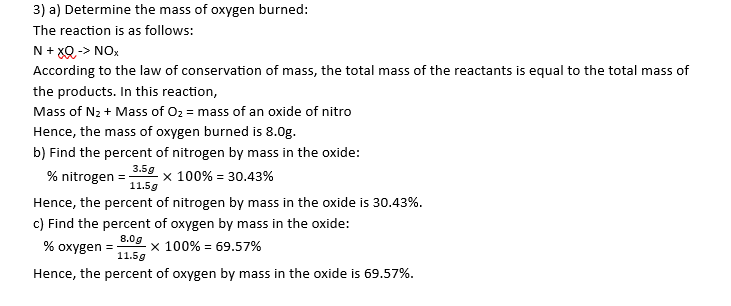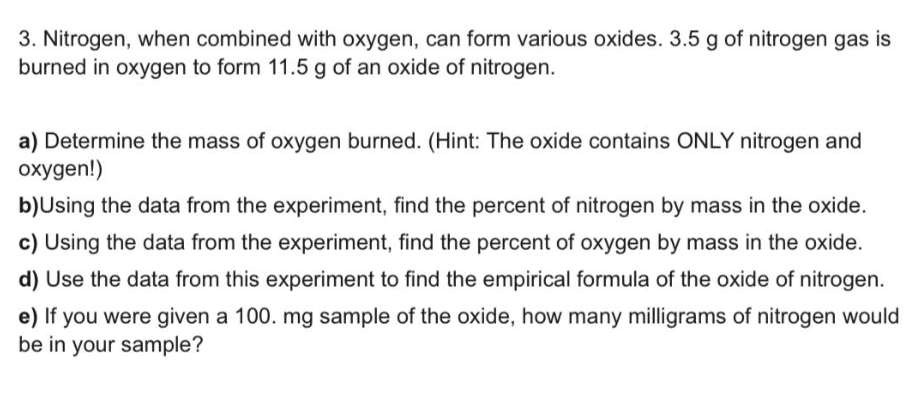3. Nitrogen, when combined with oxygen, can form various oxides. 3.5 g of nitrogen gas is burned in oxygen to form 11.5 g of an oxide of nitrogen. a) Determine the mass of oxygen burned. (Hint: The oxide contains ONLY nitrogen and oxygen!) b)Using the data from the experiment, find the percent of nitrogen by mass in the oxide. c) Using the data from the experiment, find the percent of oxygen by mass in the oxide. d) Use the data from this experiment to find the empirical formula of the oxide of nitrogen. e) If you were given a 100. mg sample of the oxide, how many milligrams of nitrogen would be in your sample?
States of Matter
The substance that constitutes everything in the universe is known as matter. Matter comprises atoms which in turn are composed of electrons, protons, and neutrons. Different atoms combine together to give rise to molecules that act as a foundation for all kinds of substances. There are five states of matter based on their energies of attraction, namely solid, liquid, gases, plasma, and BEC (Bose-Einstein condensates).
Chemical Reactions and Equations
When a chemical species is transformed into another chemical species it is said to have undergone a chemical reaction. It consists of breaking existing bonds and forming new bonds by changing the position of electrons. These reactions are best explained using a chemical equation.
1) The question screenshot has been attached down below answer ques 3 d,e step-by-step. I am also putting the screenhot for 3 a,b,c solution for ur reference.


Step by step
Solved in 4 steps









